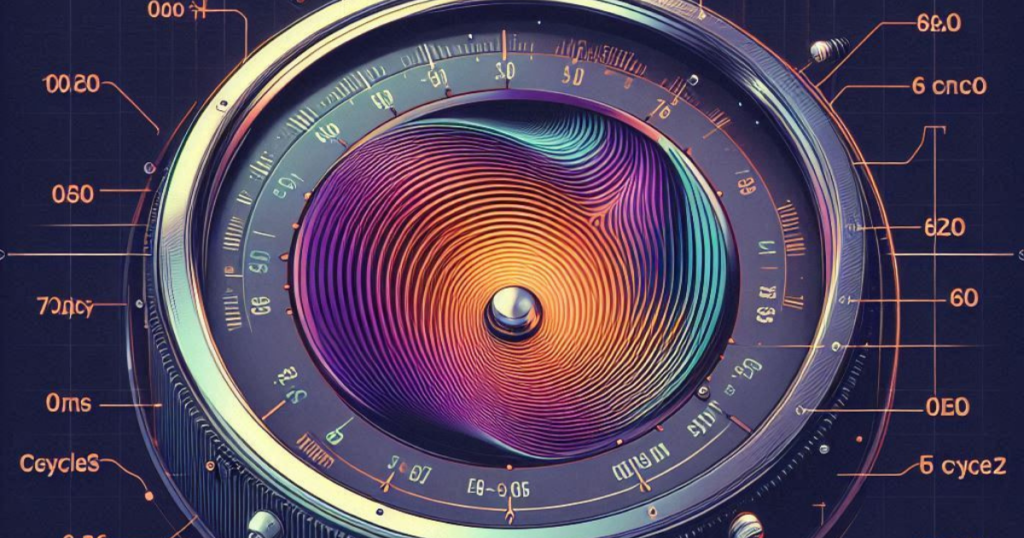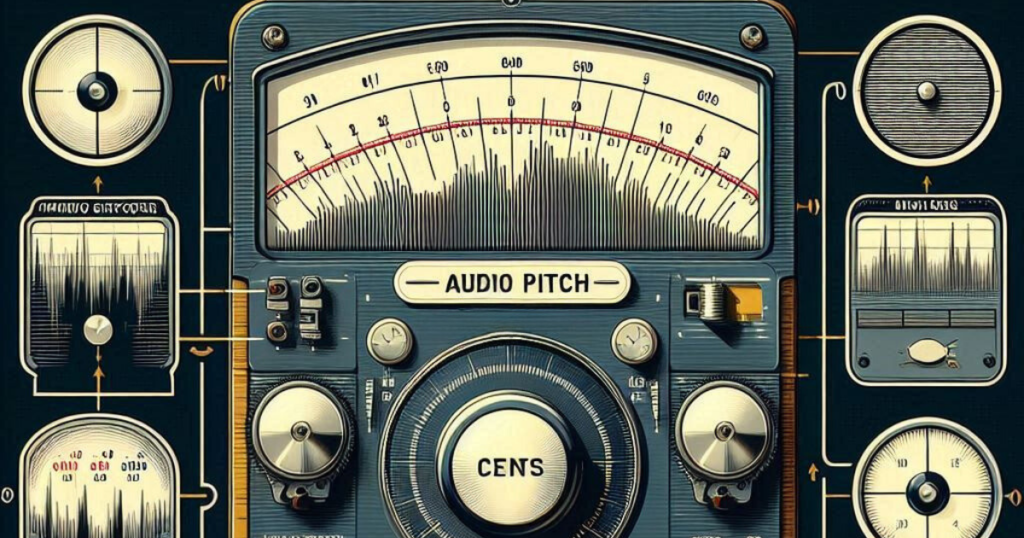Introduction
How Many Cents in 8CPS Audio Pitch is an intriguing question when exploring the connection between frequency and pitch in the audio world. Audio pitch refers to how high or low a sound is perceived, and it’s closely linked to frequency, which is measured in cycles per second (CPS) or hertz (Hz). One cycle represents a full oscillation of the sound wave. While CPS was the original term for measuring frequency, the International System of Units (SI) adopted the term hertz (Hz) in 1960. Despite the standardization, CPS is still a valuable concept in audio, particularly within the realms of music and sound engineering.
Understanding CPS and Pitch
Cycles per second (CPS) directly impacts the frequency of a sound, determining how its pitch is perceived. A frequency of 440 Hz (or CPS) corresponds to the musical note A4, widely used for tuning musical instruments. Humans can generally hear frequencies between 20 CPS to 20,000 CPS, with sounds falling outside this range classified as infrasound (below 20 CPS) or ultrasound (above 20,000 CPS).
The relationship between CPS and pitch is integral to music. The higher frequencies produce higher sounds while the lower frequencies produce lower sounds.For example, a sound at 440 Hz corresponds to the pitch A4, while a 220 Hz sound corresponds to A3, an octave lower. A fundamental understanding of CPS and pitch is crucial for musicians, sound engineers, and anyone involved in audio production, ensuring accurate tuning and harmonious sound creation.
The Role of Cents in Music

To dive deeper into How Many Cents in 8CPS Audio Pitch, we need to understand the concept of cents. Cents are a unit of measurement used in music to quantify small variations in pitch. One cent is 1/100th of a semitone, meaning that a single semitone (like the interval between two adjacent keys on a piano) consists of exactly 100 cents. This allows for more precise tuning adjustments, helping musicians achieve accurate pitch, especially when subtle variations are needed.
When considering pitch adjustments in terms of cents, musicians can fine-tune their instruments or voices by a few cents rather than an entire semitone. For instance, if a note needs to be slightly higher or lower in pitch, adjusting it by just a few cents can make a significant difference, particularly in microtonal music, where notes fall between standard pitch intervals.
In tuning systems like equal temperament or just intonation, cents help articulate the fine differences between intervals. In equal temperament, for example, each octave is divided into 12 equal semitones, each separated by 100 cents, while just intonation may require subtle deviations from equal temperament for more harmonious sounds.
Practical Implications of Cents in Pitch Adjustment
When exploring How Many Cents in 8CPS Audio Pitch, it’s important to consider the practical application of cents in both vocal and instrumental performances. Pitch variations in the range of ±5 to ±10 cents are typically acceptable for vocals and can even enhance the emotional depth of a performance. These slight variations often go unnoticed by the audience but contribute to the natural, expressive qualities of a song.
However, in classical music and other genres that demand strict tuning precision, exceeding ±10 cents can result in noticeable deviations from the intended pitch, affecting the overall sound quality. In genres like jazz or blues, pitch deviations are often welcomed as they add expressiveness to the performance. In contrast, precision is crucial in classical music, where even small changes in pitch can disrupt the harmony of an ensemble.
For instruments tuned to equal temperament, like pianos and guitars, pitch deviations beyond a certain threshold can cause the performance to sound out of tune. However, instruments using natural tuning systems, such as just intonation, can tolerate more flexible adjustments, especially for wind instruments and vocals, where fine-tuning is often made to enhance the musical expression.
Tuning and Expression in Music

Cents also play a vital role in tuning electronic devices and software that help musicians achieve perfect pitch. Digital pitch correction tools rely on adjusting pitch by a few cents to ensure harmonic accuracy. In the context of How Many Cents in 8CPS Audio Pitch, understanding the fine balance between technical precision and emotional expression is essential for musicians striving to deliver a performance that resonates with listeners.
Microtonal music, which explores pitch variations smaller than a semitone, often relies heavily on cents. These subtle shifts allow for creative exploration of sounds that go beyond traditional tuning systems. Understanding how to manipulate pitch using cents is key for musicians and audio engineers, enabling them to create sounds that are both technically accurate and emotionally powerful.
Contextual Variations in Pitch Perception
Pitch perception is not a fixed concept; it varies based on context and the individual’s hearing abilities. In genres like classical music, where precision is paramount, any pitch variation that exceeds a certain threshold can disrupt the harmony. In contrast, in genres like blues, jazz, or rock, pitch bending and microtonal adjustments are often embraced, contributing to the expressive, human quality of the music.
Theories like place theory and temporal theory explain how our brain processes pitch. Place theory suggests that different frequencies stimulate specific areas of the cochlea, while temporal theory emphasizes the timing of nerve impulses. Musicians who are trained to detect subtle differences in pitch have an enhanced ability to hear and adjust for microtonal variations, such as those described by cents.
Conclusion
In conclusion, How Many Cents in 8CPS Audio Pitch is a concept that allows musicians, audio engineers, and sound professionals to achieve precise pitch control and fine-tune their performances. Understanding CPS and the way it relates to pitch is foundational in music, whether it’s for tuning instruments or producing recordings that balance both technical accuracy and emotional depth.
The use of cents provides a practical tool for musicians, helping them make slight adjustments to pitch that may otherwise go unnoticed, yet significantly impact the sound quality and emotional expression of their music. Whether working within the confines of equal temperament or exploring the nuances of microtonal music, the ability to understand and apply cents helps create music that resonates deeply with listeners, achieving both harmony and individuality.
